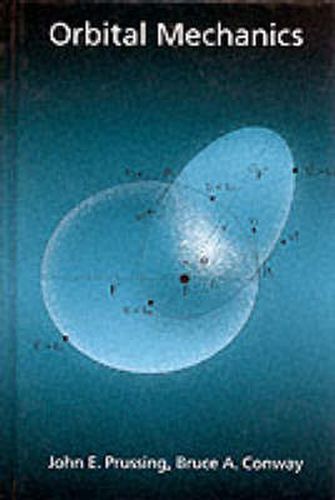Readings Newsletter
Become a Readings Member to make your shopping experience even easier.
Sign in or sign up for free!
You’re not far away from qualifying for FREE standard shipping within Australia
You’ve qualified for FREE standard shipping within Australia
The cart is loading…






One of the major challenges of modern space mission design is the orbital mechanics – determining how to get a spacecraft to its destination using a limited amount of propellant. Recent missions such as Voyager and Galileo required gravity assist maneuvers at several planets to accomplish their objectives. Today’s students of aerospace engineering face the challenge of calculating these types of complex spacecraft trajectories. This classroom-tested textbook takes its title from an elective course which has been taught to senior undergraduates and first-year graduate students for the past 22 years. The subject of orbital mechanics is developed starting from the first principles, using Newton’s laws of motion and the law of gravitation to prove Kepler’s empirical laws of planetary motion. Unlike many texts the authors also use first principles to derive other important results including Kepler’s equation, Lambert’s time-of-flight equation, the rocket equation, the Hill-Clohessy-Wiltshire equations of relative motion, Gauss’ equations for the variation of the elements, and the Gauss and Laplace methods of orbit determination. The subject of orbit transfer receives special attention. Optimal orbit transfers such as the Hohmann transfer, minimum-fuel transfers using more than two impulses, and non-coplanar orbital transfer are discussed. Patched-conic interplanetary trajectories including gravity-assist maneuvers are the subject of an entire chapter and are particularly relevant to modern space missions.
$9.00 standard shipping within Australia
FREE standard shipping within Australia for orders over $100.00
Express & International shipping calculated at checkout
One of the major challenges of modern space mission design is the orbital mechanics – determining how to get a spacecraft to its destination using a limited amount of propellant. Recent missions such as Voyager and Galileo required gravity assist maneuvers at several planets to accomplish their objectives. Today’s students of aerospace engineering face the challenge of calculating these types of complex spacecraft trajectories. This classroom-tested textbook takes its title from an elective course which has been taught to senior undergraduates and first-year graduate students for the past 22 years. The subject of orbital mechanics is developed starting from the first principles, using Newton’s laws of motion and the law of gravitation to prove Kepler’s empirical laws of planetary motion. Unlike many texts the authors also use first principles to derive other important results including Kepler’s equation, Lambert’s time-of-flight equation, the rocket equation, the Hill-Clohessy-Wiltshire equations of relative motion, Gauss’ equations for the variation of the elements, and the Gauss and Laplace methods of orbit determination. The subject of orbit transfer receives special attention. Optimal orbit transfers such as the Hohmann transfer, minimum-fuel transfers using more than two impulses, and non-coplanar orbital transfer are discussed. Patched-conic interplanetary trajectories including gravity-assist maneuvers are the subject of an entire chapter and are particularly relevant to modern space missions.